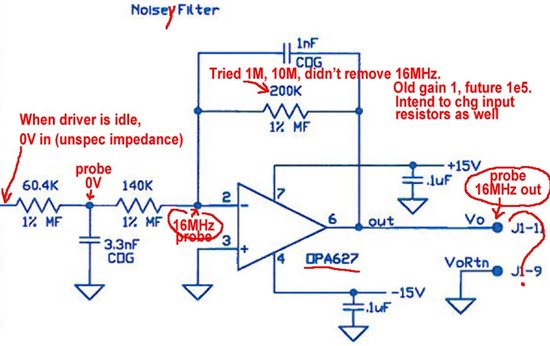I inherited a special purpose amplifier that included the noise(y) filter below. Everything in front of the noise(y) filter is working properly. When things are idle up front, I get about 0V coming into this section. However, this circuit is oscillating, introducing a 16MHz signal.
I'm not sure how to get rid of it. Your assistance would be greatly appreciated.
Do note that I read about the OPA637 being stable above gain of 5. Also, due to an unrelated problem upstream, I want to increase the gain of this stage from -1 to -1e5 (-100,000). So I tried putting in a larger feedback resistor, but this didn't change the noise at all. So, I don't know what's unstable about this circuit.
Note also that I confirmed that the 16MHz is not present on the input, or at the middle of the incoming Tee filter. I checked this just to make sure the problem wasn't with my scope or ground, or some snafu like that.


